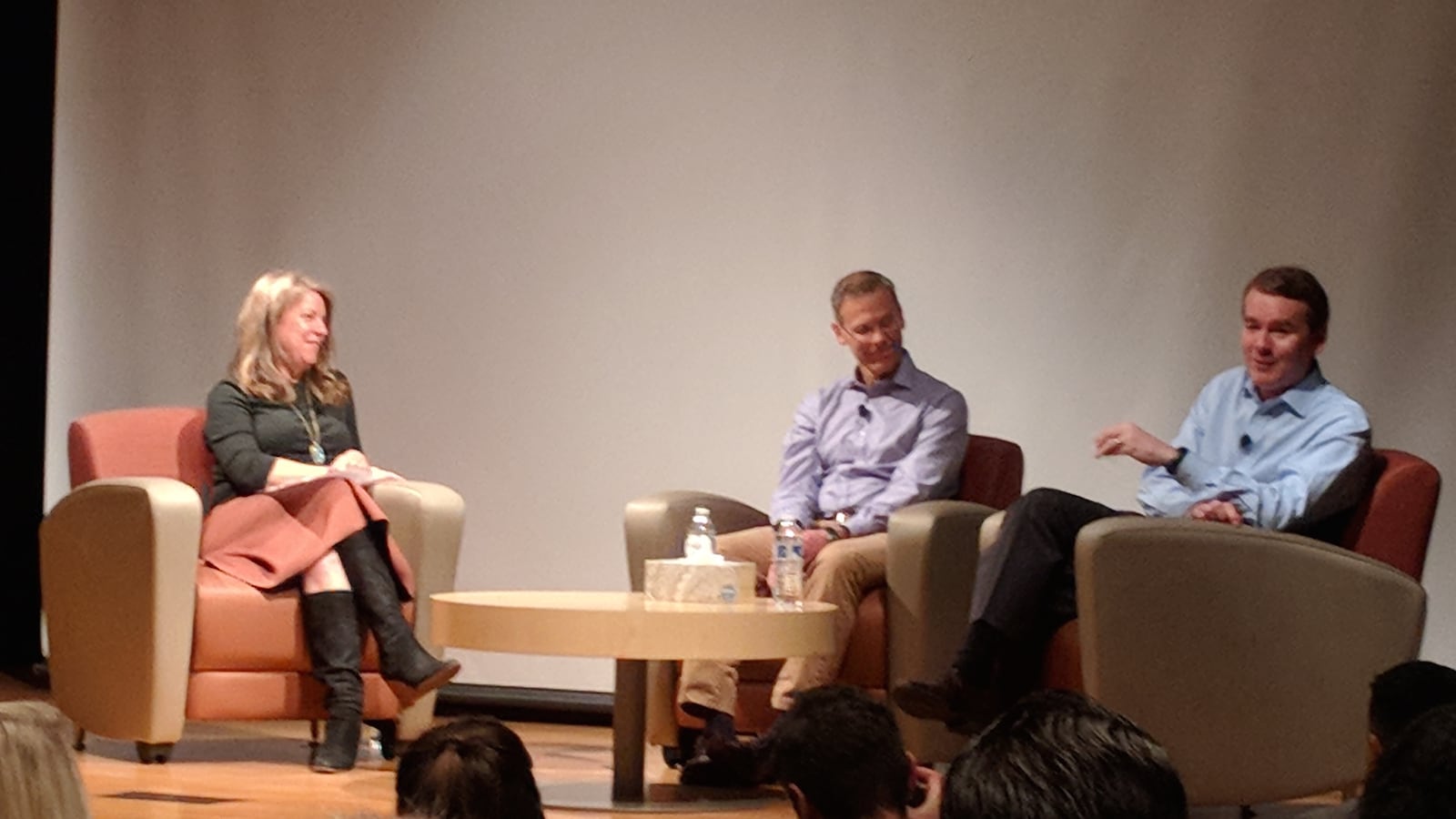The two men responsible for guiding Denver schools through dramatic changes over the last 13 years shared the same stage Friday and said their decisions to close two neighborhood high schools were necessary steps to give kids better opportunities.
Current Denver Superintendent Tom Boasberg and his predecessor and former boss, U.S. Sen. Michael Bennet, were the headline speakers at “Schools as the Unit of Change: Building on Progress in Denver,” an event hosted by the Denver-based Gates Family Foundation. (The foundation is a financial supporter of Chalkbeat; you can see our list of funders here).
Boasberg and Bennet, with the backing of school board leadership, have steered the state’s largest district through reforms that include creating a unified school choice system, closing low-performing schools and replacing them with schools the district deems more likely to succeed, and building a “portfolio” of district-run, charter, and innovation schools.
At Friday’s gathering at the Denver Museum of Nature and Science, Bennet and Boasberg defended their most controversial decisions, tried to claim an imperiled political center, and argued there is no shortcut to lifting achievement for all students.
Here’s what they had to say:
Closing Manual and Montbello high schools was the right thing to do, but mistakes were made
The year after arriving to lead the district with a resume as a lawyer and a high-powered investment manager with no experience in school administration, Bennet moved to close long-struggling Manual High School. In doing so, Bennet ushered in an era of closing low-performing schools in Denver — an option unthinkable in most other cities because of the fraught, if not impossible, politics.
Bennet on Friday described that as “a watershed moment” in the history of Denver Public Schools that “demonstrated that we were not going to settle.” (Manual reopened in 2007, and struggled again in the years that immediately followed).
Boasberg continued the practice of shutting low-performing schools, with board support. Since Boasberg took the role nine years ago, the Denver district has opened 75 new schools and closed 30 lower-performing ones.
If Bennet’s watershed moment was Manual, Boasberg’s was Montbello High in far northeast Denver, which was replaced by three smaller schools.
Boasberg called out the success in far northeast Denver — many more families keeping students in area schools, a doubling of the number of graduates. But he also acknowledged missteps, including focusing so much on academics that officials failed to make sure they kept an athletic program the community could be proud of.
“But again, the changes were very necessary,” Boasberg said. “The changes were all about, ‘How do we get better opportunities for more kids faster?’ … That is the gold standard, the north star.”
The future of schools in far northeast Denver is back in the spotlight, with some parents and community members advocating for bringing back a traditional Montbello High School.
‘Currents of orthodoxy’ are threatening efforts to solve problems
Both Bennet and Boasberg pride themselves on a consensus-building approach to tackling problems. But in 2018, staking out a moderate stance runs counter to the prevailing political winds, in which activists on both the right and the left are fired up and influential.
Boasberg warned against the perils of being carried away in “the currents of orthodoxy,” and extended that to people in the room who endorse Denver’s brand of education reform. This polarization is not confined to national politics. Right now, Denver Public Schools is caught between those pushing for faster change and community pressure to preserve neighborhood schools.
“Folks are being pushed to the edges on the right and left on politics,” Boasberg said. “Part of what we’ve been able to do in Denver for some time is to reject the orthodoxy of the left and right.”
Rather, he said, people in Denver have taken elements from both and figured out “how to put different pieces together that respond to the needs of our community.”
Boasberg said he strongly disagrees with people opposed to the district’s embrace of charter schools. “At the same time, it’s important that we don’t try to demonize those points of view or delegitimize it.” He spoke of trying to find common ground whenever possible, but recognizing disagreement is legitimate and normal.
Bennet, too, lamented the current state of discourse. “We are thinking of people who disagree as somehow not having a legitimate place on the playing field,” he said.
Denver has made gains in many areas, but shortcomings persist — and it’ll take time
When it comes to Denver’s efforts to lift academic performance, Boasberg leaned on the common expression about the “glass half full, and glass half empty.”
He was far more on the side of “half full.”
Boasberg noted a number of ways DPS is different than it was 13 years ago — doubling the number of African-American and Latino students graduating high school, cutting the dropout rate by 70 percent, and catching up to state averages on test scores by different demographic groups.
Yet this week’s release of results from a test known as “the nation’s report card” also underscored how far the district has to go: Compared to other large, urban school districts, Denver has among the biggest achievement gaps in the country between white and Hispanic students in reading and math.
Boasberg said people who say nothing has changed are “Chicken Littles” staking out a position “that is as ignorant and unhelpful and blinded as people who say everything is great, everything is cool, everything is working perfectly.”
While Boasberg has said he thinks the district’s aggressive goals are achievable, both Bennet and Boasberg underscored that getting any school district to where it needs to be will take time.
“If you are interested in making enduring change,” Bennet said, “there is no shortcut.”

